Bigos aka Polish Hunter’s Stew, next to pierogies, is the best known and the most popular Polish dish. Made by generations of Polish grandmas, it’s as traditional as you can get. It has been a part of Polish cuisine for centuries. Just like any stew, it’s usually made when the cold whether hits and you need something simple, hearty and nourishing to eat. In my family, we always have Bigos the day after Christmas. The mixture of meats, sauerkraut and sausages is very filling and extremely satisfying.
This year, it was my little brother’s turn to make bigos (pronounced Bee-GOS). We followed our Mom’s recipe but for the first time we used a crockpot and it was as good as ever.
Find slow cookers on sale on Amazon
It appears that every family in Poland has their own special recipe for Bigos, so I’m going to share my Mom’s traditional version. She learned it from her Mom.
The beauty of Polish Hunter’s Stew (or any stew for that matter) is that the proportions do not need to be exact. You can use any meat you like (all the leftovers) or whatever you find at the bottom of your freezer. If you don’t have ham, use more bacon, if you love mushrooms, add more.
You can mix different types of meat but stay away from lean cuts like pork tenderloin or poultry. Use meat that loves slow cooking like pork shoulder or chuck steak. The meat is the star of this dish and it is entirely up to you what you select.
Another great thing about this dish is that it improves in flavour over time. You can keep Bigos in the fridge for 3 to 4 days and every time you reheat it in a saucepan before serving, it taste better and better.
Traditionally, we would cook large batches, divide them into small portions and freeze them to be eaten at a later date. Just remember to leave some space in your container for the stew’s liquid to expand as it freezes.
Ingredients
- 1 lb (250 g) boneless pork shoulder or pork belly (cubed)
- 1 lb (250 g) stew beef or any meat of your choosing (cubed)
- 1 lb (250 g) sliced Polish kielbasa (smoked sausage)
- 1 lb (250 g) slab bacon (cubed)
- 1/2 lb ham (diced)
- 2 lbs (1 kg or 1 jar) sauerkraut, drained and rinsed
- 1 cup dried porcini mushrooms or other wild mushrooms
- 1 medium onion (diced)
- 1 carrot (shredded)
- 1 parsley root (shredded)
- 5-6 grains allspice
- 3-4 bay leaves
- 6-8 black peppercorns
- 1 teaspoon vegetable seasoning (Vegeta)
- salt and pepper to taste.
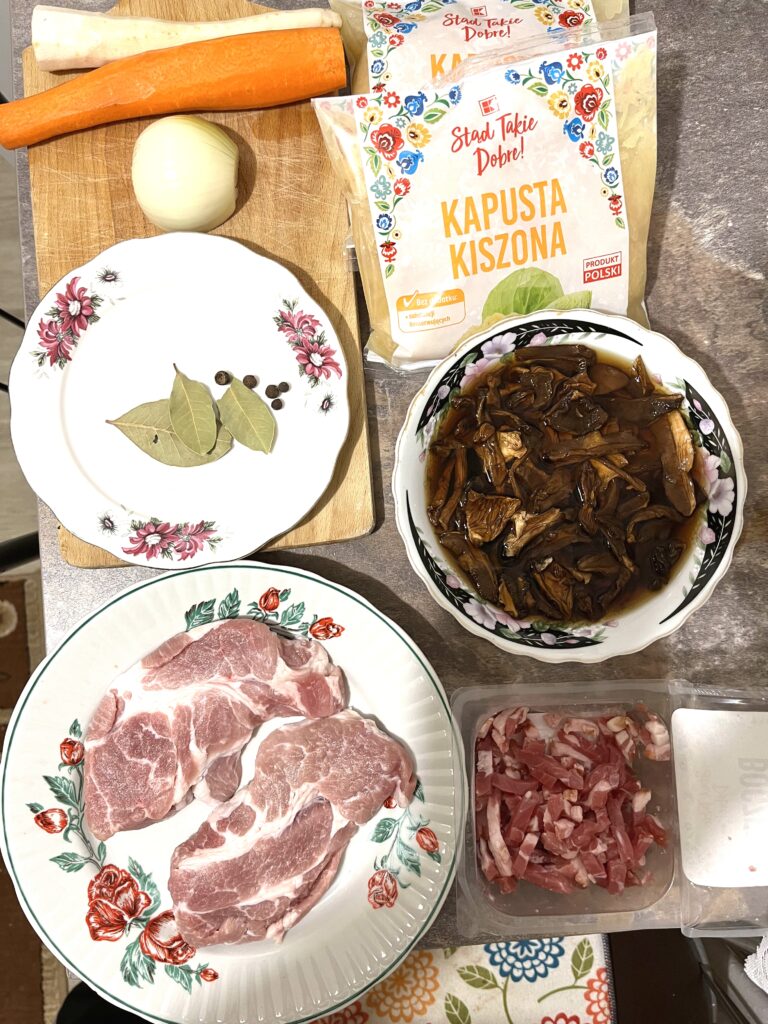
Instructions
Place the dried porcini mushrooms in a small bowl, cover with cold water and set aside to rehydrate. Leave them for about 30 min (or until soft) while you prepare the meat.
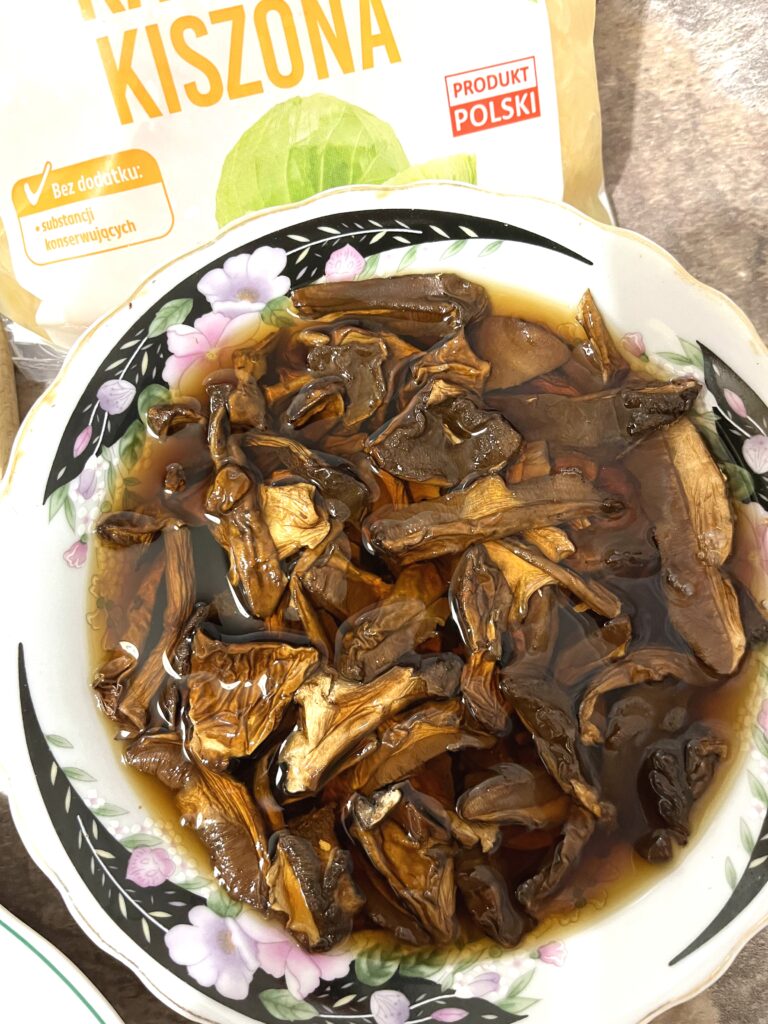
The best is an organic, raw fresh sauerkraut, which you can find in Polish or Ukraine stores but the one from the jar, available in most grocery stores, is still good.
The sauerkraut may contain vinegar (especially the jarred kind) and can be salty. To reduce acidity of the sauerkraut, drain and rinse it first. Once drained set aside.
When you buy sauerkraut in your local grocery store, make sure to buy regular sauerkraut. Ingredients should be “white cabbage, water and salt”. Do not buy sauerkraut in white wine.
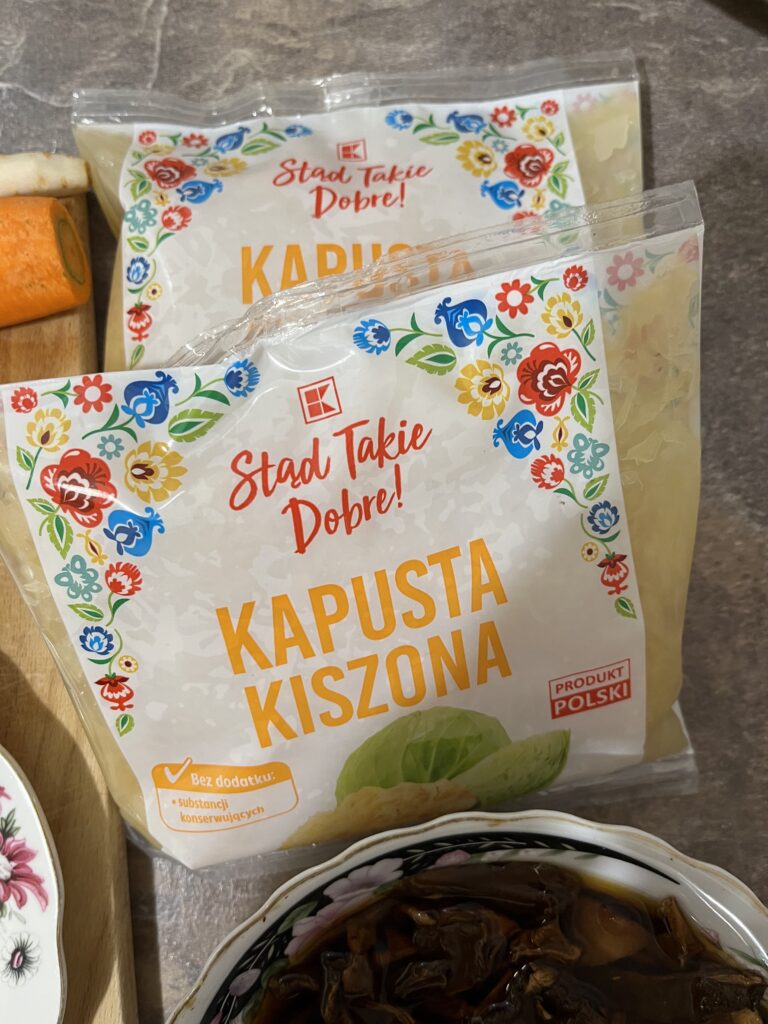
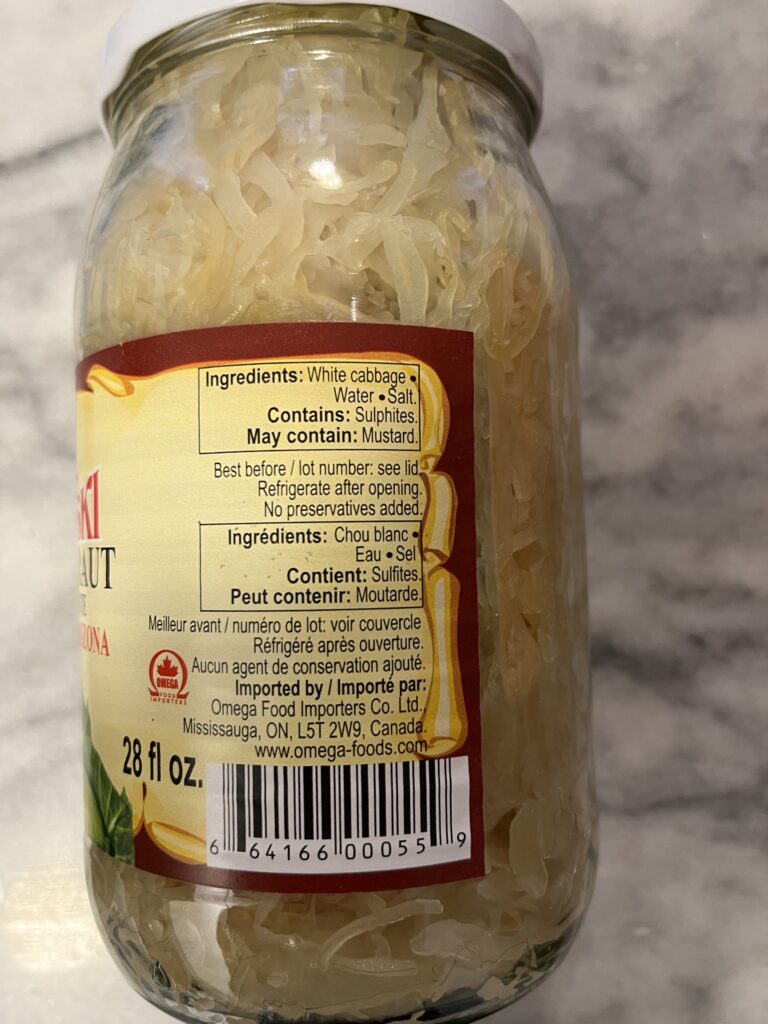
Cut the pork, beef, ham, bacon and sausages into large chunks and set aside.
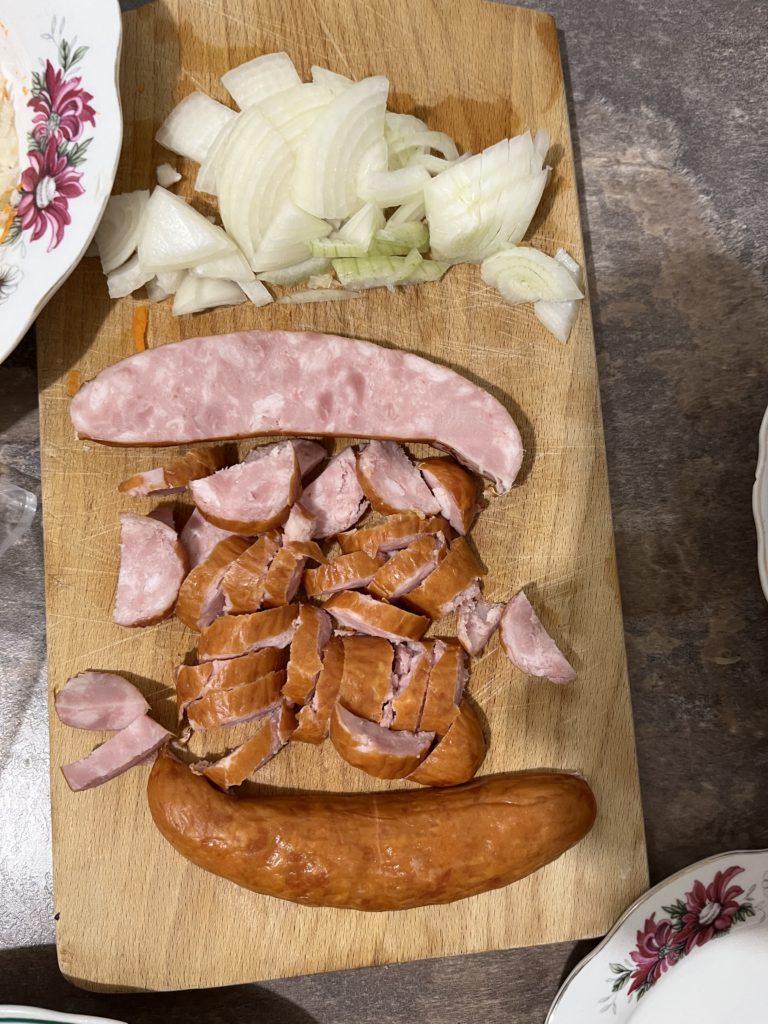

Next, chop the onions and shred carrot and parsley root.
Drain the mushrooms or use a fork to remove the porcini mushrooms from their liquid. Coarsely chop them and set aside.
Use a small strainer over measuring cup and strain the liquid leftover from soaking the mushrooms to remove any accumulation that collected at the bottom of the bowl. The liquid will be added later to the stew so don’t throw it away. If you don’t have dried mushrooms, you can substitute with fresh sauteed mushrooms.
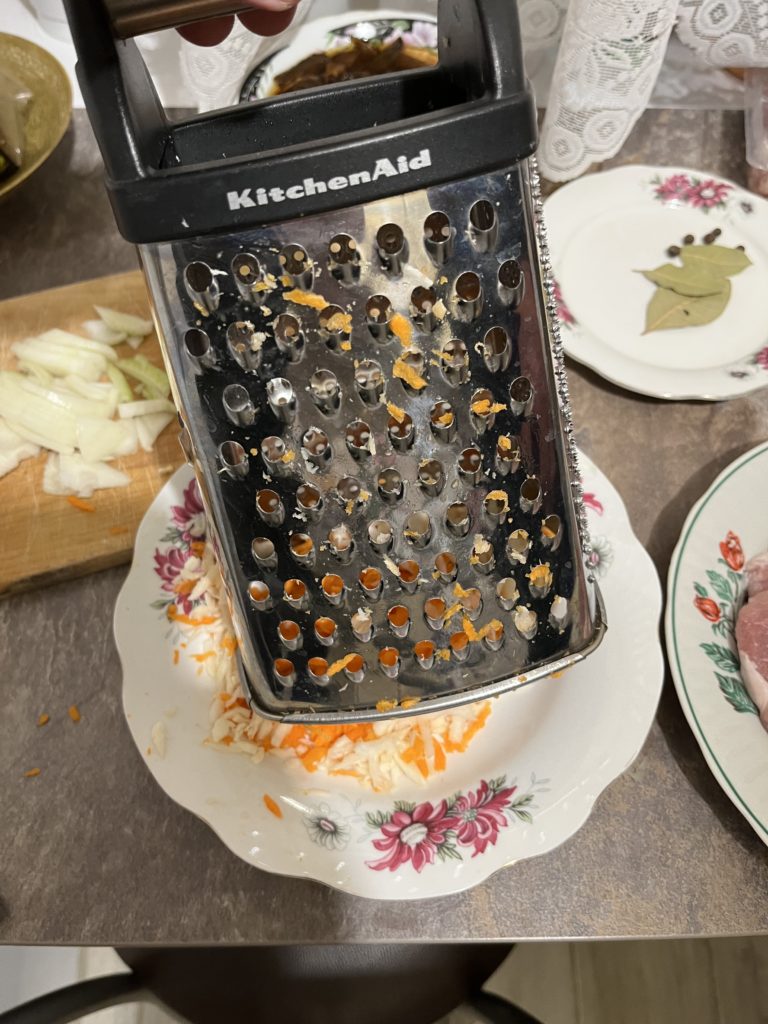
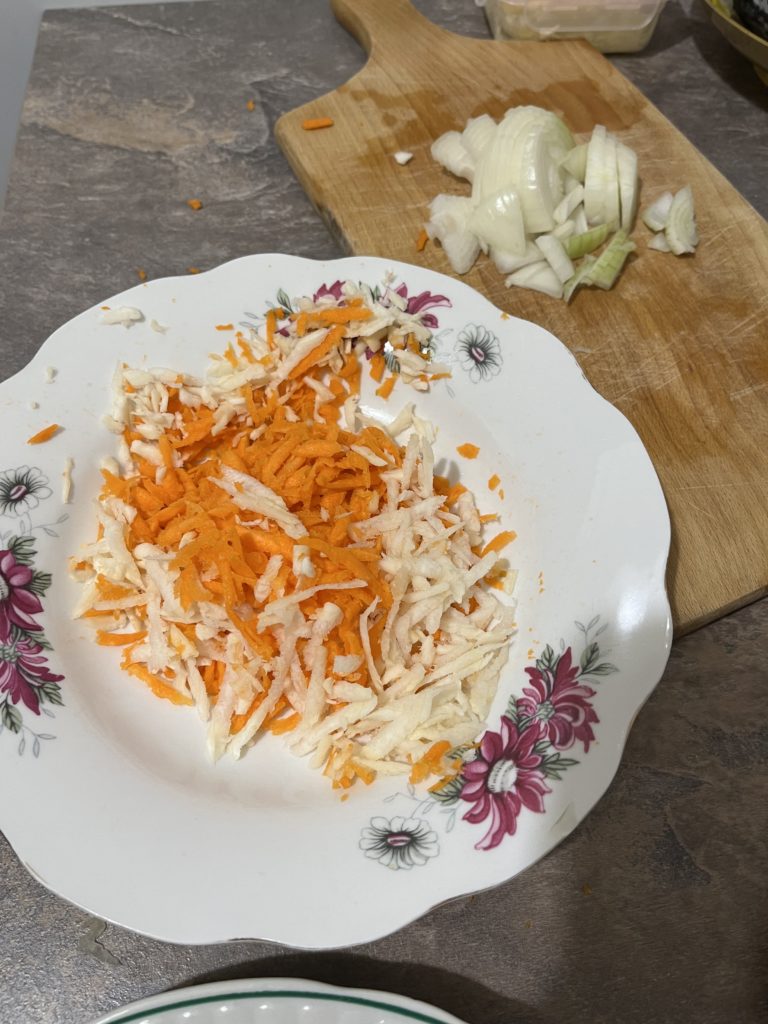
Next, on the frying pan heat up a touch of oil or, even better, little bit of lard. Cook sliced bacon for a few minutes until the fat melts. Remove the bacon using a slotted spoon and transfer to a separate plate. On the same frying pan (leave the bacon fat in the pan), over medium-high heat, sear the sliced sausage and brown lightly the pork shoulder and the beef. Browning the meat increases the flavours. Transfer the meat to a plate and reserve. If needed, to avoid overcrowding, you can do it in batches. If, at any time the pan becomes dry, add a few teaspoons of oil or lard.
Lastly, sauté chopped onions for about 3 to 4 minutes or until cooked through and translucent.
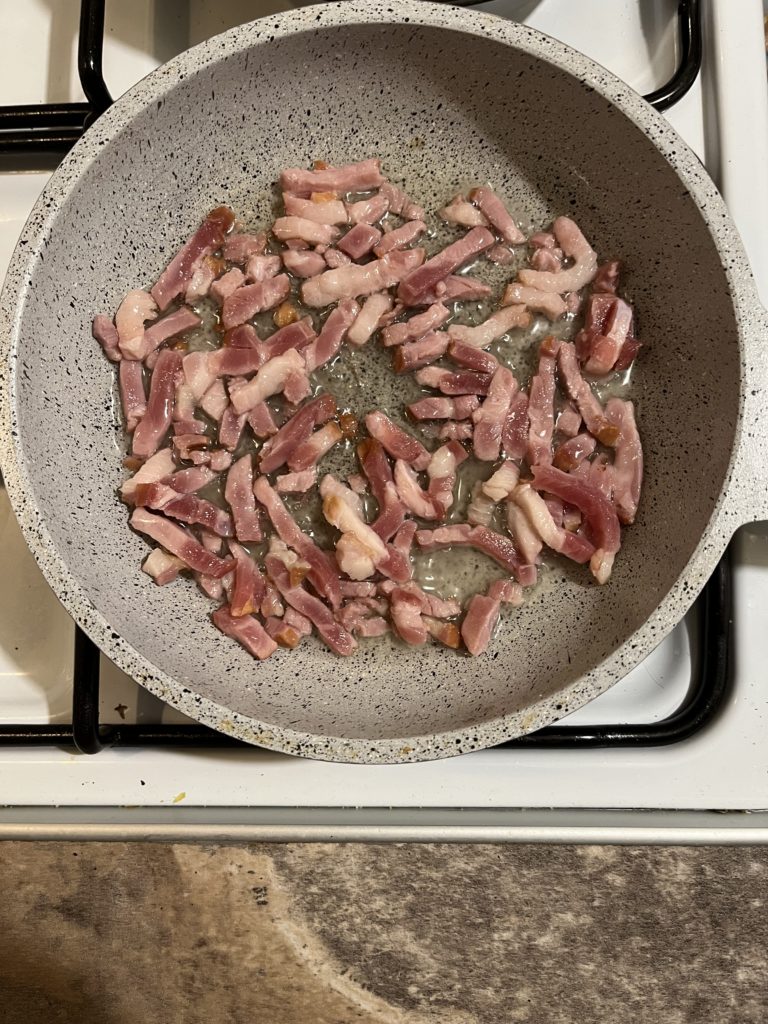
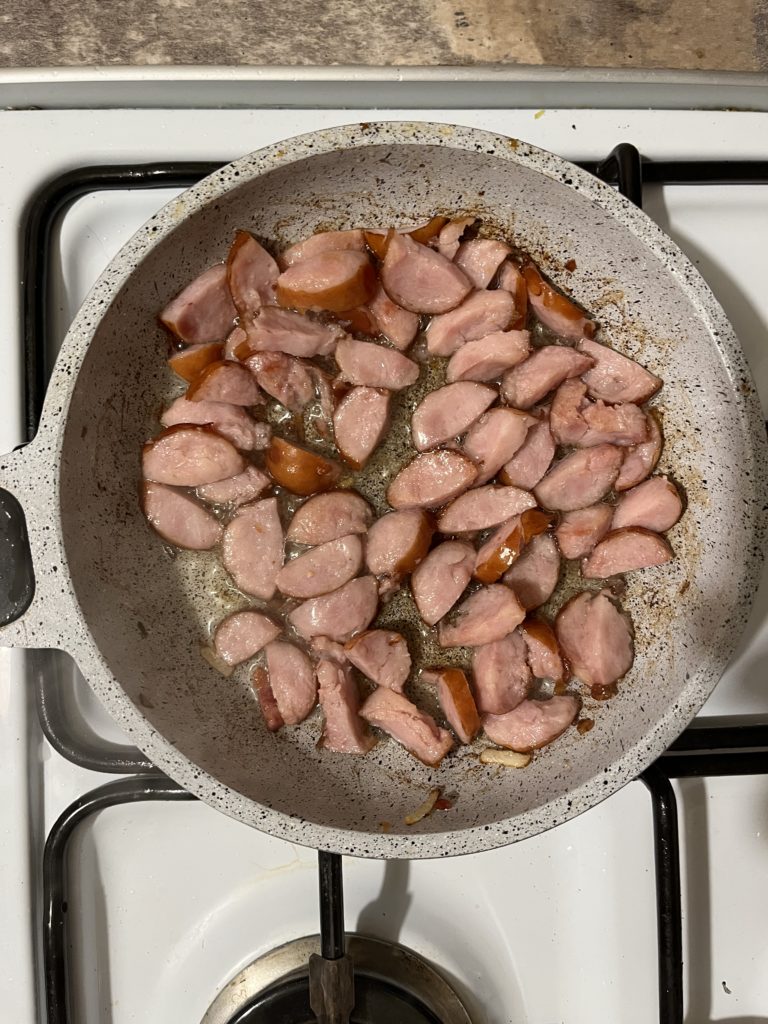
Now, it’s time to prepare the crock pot.
A lot of people don’t like to use slow cooker for one simple reason, it’s so hard to clean it. I was one of them until I discovered the Slow Cooker Liners (you can find them on Amazon). In my mind, this is one of the greatest kitchen inventions ever. It’s a bag that you place inside the crock pot before you add all ingredients for your stews, chillies, roasts etc. I’ve been using these bags for years and my slow cooker looks like brand new and I’ve never washed it. It works like a dream. Now I use my crock pot all the time and all I have to do is empty the bag and throw it away.
If you can’t find Slow Cooker Liners in your local store, you can always buy them on Amazon.
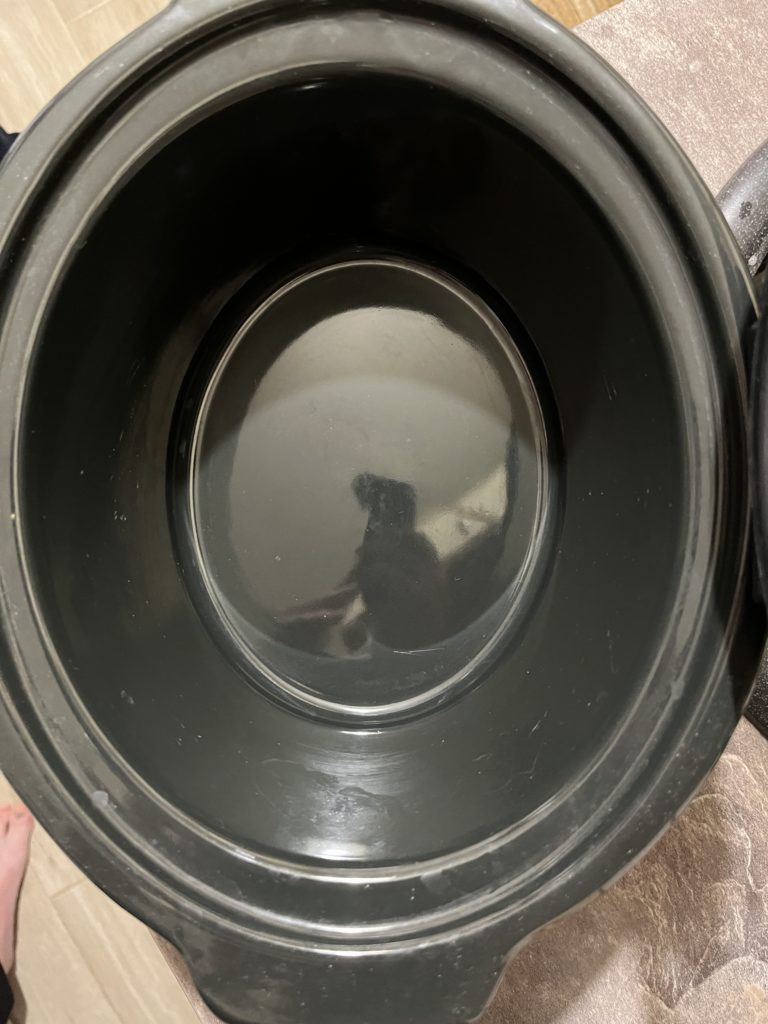
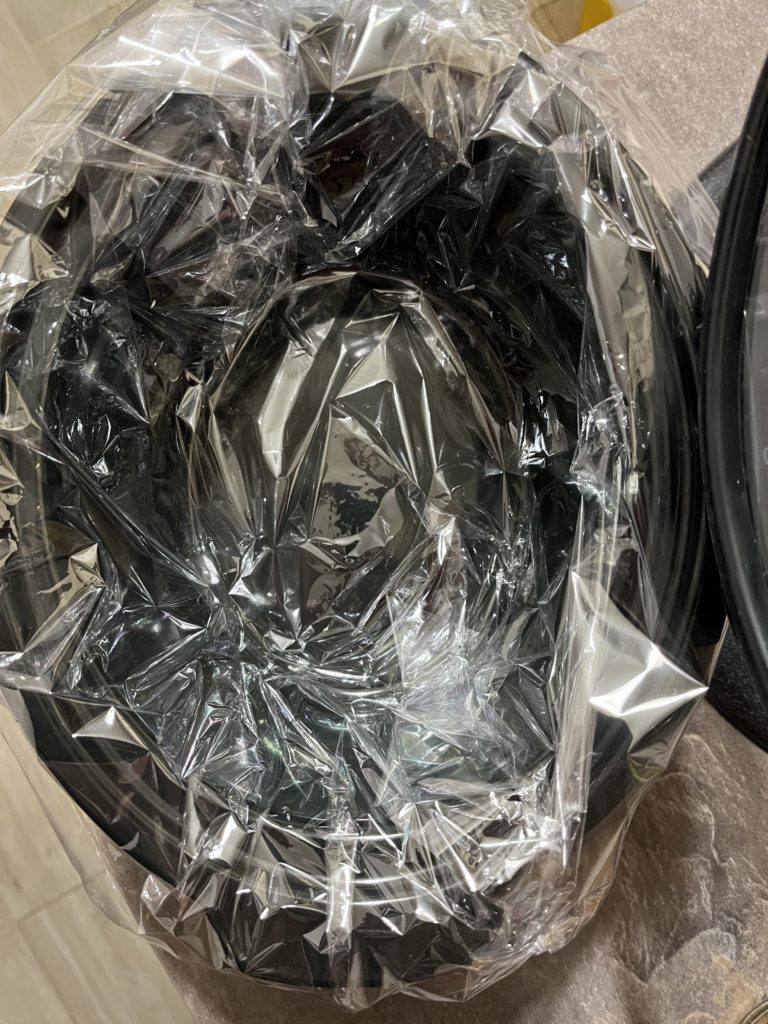
Now, it’s time to transfer all the ingredients into the crockpot.
I like to start with a layer of sauerkraut (half portion) at the bottom of the pot. Then, add half of your shredded carrot, parsley root, soaked dried porcini mushrooms, meat, ham, bacon, sausage, 2-3 bay leaves and seasonings.
Add the rest of sauerkraut and top with remaining meat, bacon, ham, sausage, veggies, mushrooms, all the spices, bay leaves and porcini mushrooms. Pour the strained liquid from dried mushroom into the stew. I also add the fat from the frying pan that was left after cooking bacon and meat.
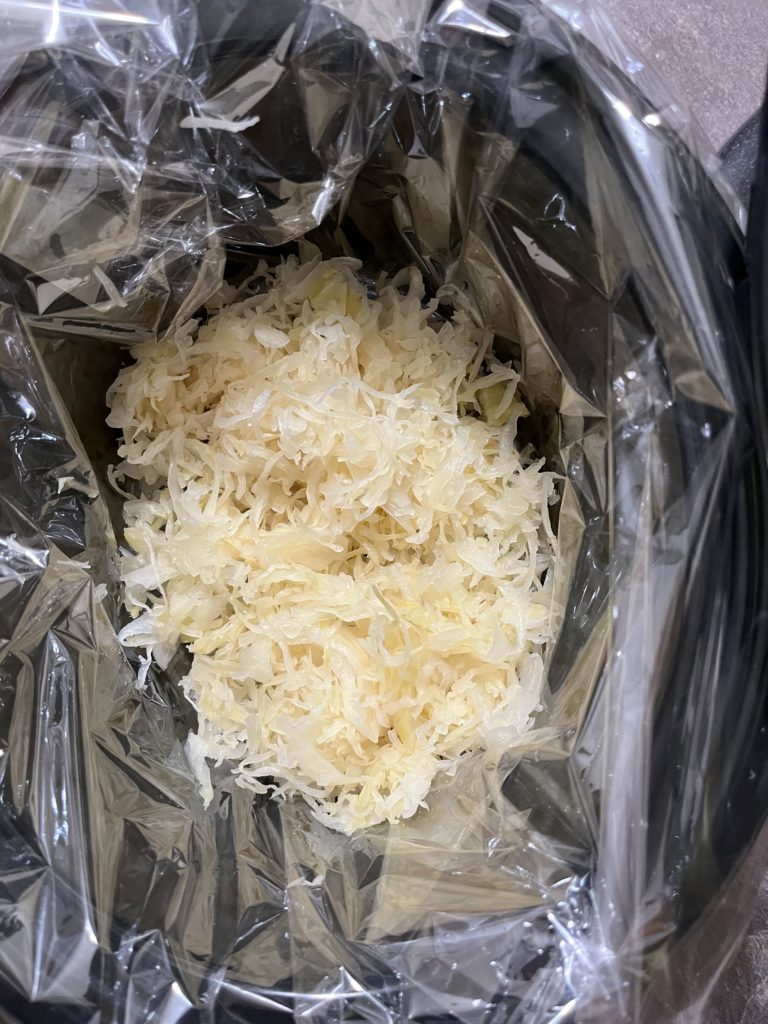
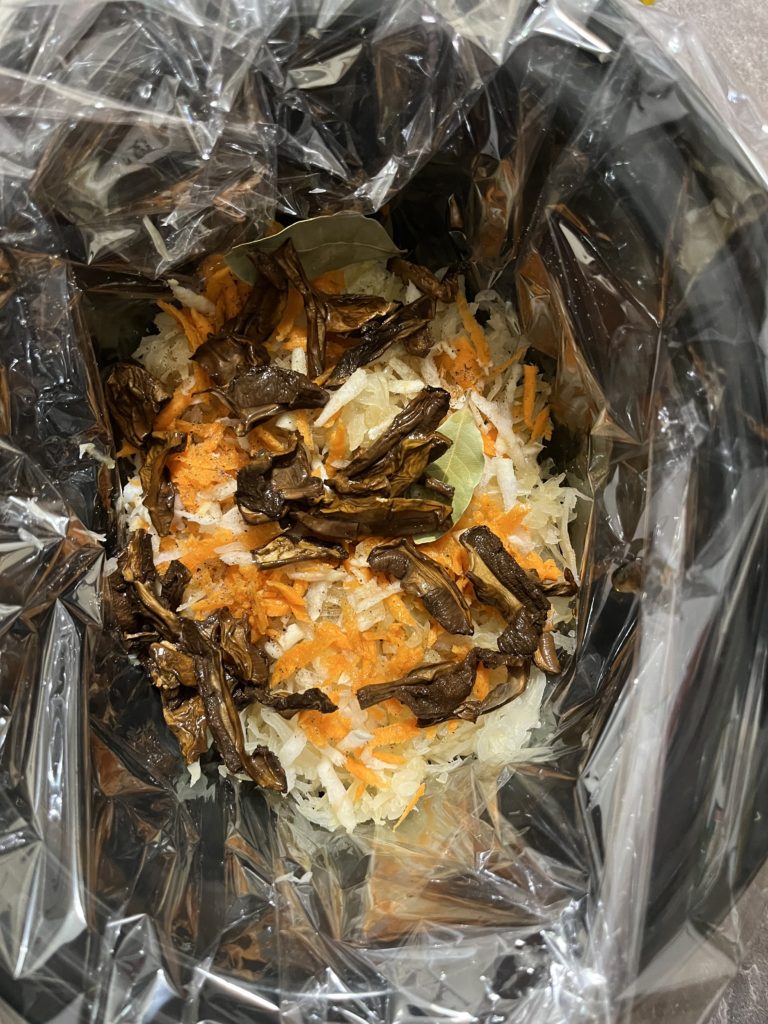
Cover and cook on the LOW setting for 8-10 hours (or even overnight). You can relax now, the rest is done by a crockpot. The longer you cook the better is Bigos.
About an hour or so before the stew is ready, check for the seasoning. Taste and adjust salt and pepper.
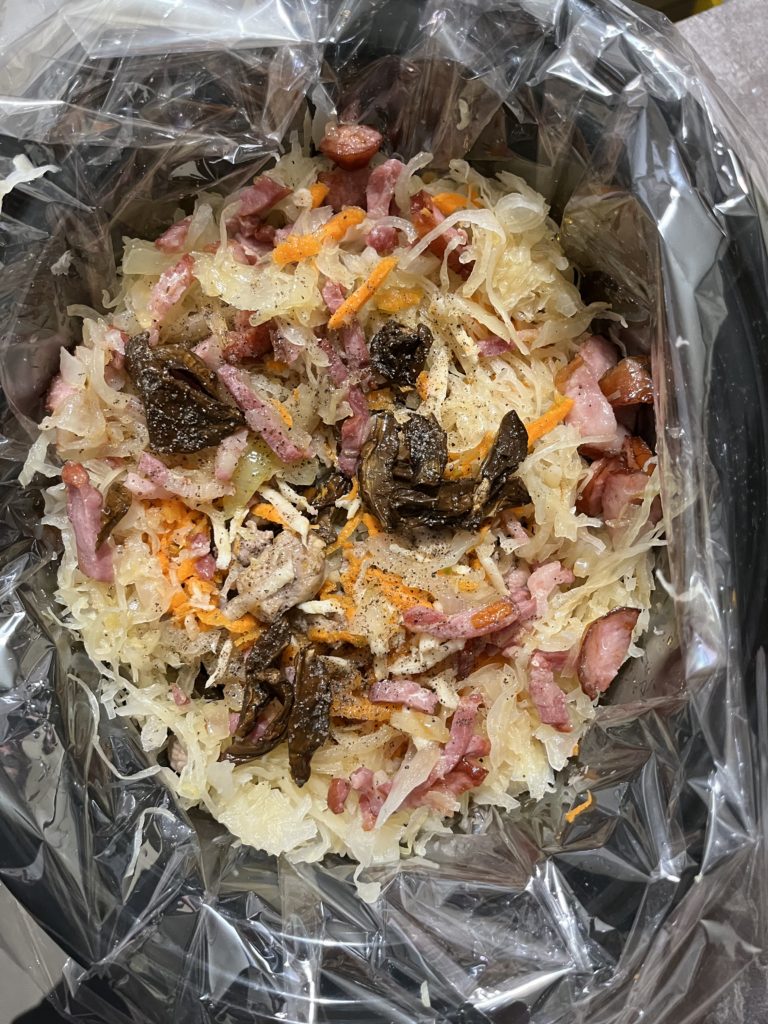
Discard the bay leaves and the stew is ready to eat. Serve hot with rye bread or over mashed potatoes.
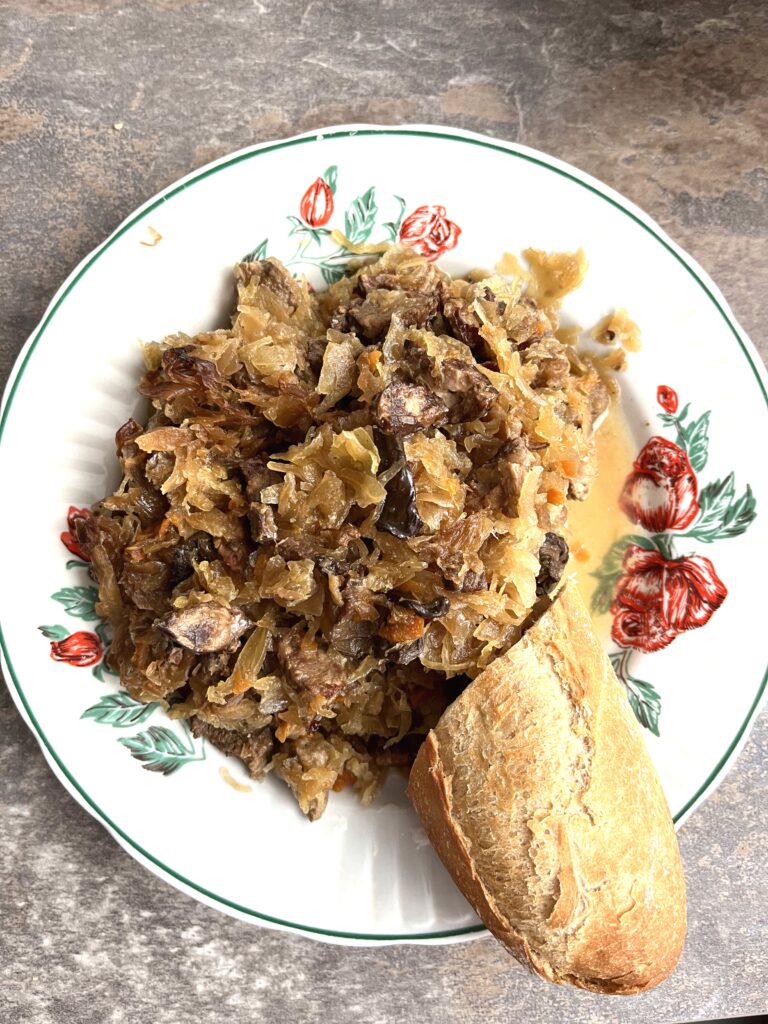
Just like with most stews, Bigos is always better the next day. Don’t be afraid to serve leftovers a day or two or even three days after you made it. To reheat, place the stew on the stove over low heat. Keep the lid partially cover, stir occasionally and serve when the stew is steaming hot.
SMACZNEGO!
Also, try Mama’s recipe for Polish potato pancakes, known as placki ziemniaczane. You will love it.




